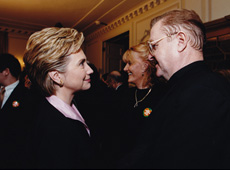EU biggest threat to Ulster Unionism
Posted By: July 31, 2020
Alex Kane. Irish News. Belfast.Friday, July 31, 2020
For most of the first 60 years or so of partition unionism had a valuable card in its deck: the Republic looked like a political/economic minnow, with no appeal whatsoever to an emerging demographic of middle class nationalists which preferred to look east (as well as looking internally at change in Northern Ireland) rather than south.
When the IRA ended its 1956-62 border campaign in February 1962, the statement included these words: ‘Foremost among the factors motivating this course of action has been the attitude of the general public whose minds have been distracted from the supreme issue facing the Irish people – the unity and freedom of Ireland.’
That sentence could have been cut to a few words: ‘There’s nothing about a united Ireland which appeals to most nationalists in the north’.
Within a decade, of course, the political dynamics had changed, with the Civil Rights campaign providing an opportunity for a new generation of the IRA (the Provisionals) to hitch their ‘volunteers’ to that wagon and rekindle the flame; while, in 1972, with the collapse of Stormont, there was the clearest possible evidence, some thought, that the state was ‘unstable’ and unionism vulnerable. It seemed inevitable that a new campaign would begin.
Yet none of the 1966-72 shifts changed the reality that most nationalists still didn’t view a united Ireland as a priority, not least because unionism retained a substantial overall majority and the Republic still didn’t appear to have much to offer.
Also, the fact the ‘new’ IRA seemed Marxist (Karl rather than Groucho) held little appeal on either side of the border for those nationalists who did favour unity.
It was the Republic’s membership of the EEC/EC/EU which changed everything. A recent essay in the Economist noted: ‘It is in the EU where Ireland shows true diplomatic dexterity. It avoids easy classification. Though it is now among the richest countries in the bloc, it started life as the poorest, relying on EU funding to spur growth. It is a member of the New Hanseatic League, a club of northern, liberal countries, yet it was among the first to back a demand from southern Europe for common debt to be issued by the EU and granted to struggling governments. Ireland can fairly be labelled as a northern, southern, eastern or western European country.’
And that’s precisely why it appeals to so many nationalists in Northern Ireland right now – something that was obvious long before Brexit, by the way. It also appeals to pro-EU unionists (who are rattled by the DUP’s recent dalliance with a regenerated English populism) and to a younger generation from a pro-Union background who view it as more relaxed and liberal than Northern Ireland.
Sinn Féin tapped into this trend from the late 1970s. The shift to the Armalite/ballot paper strategy in 1981 was a response to the huge nationalist/republican reaction to the hunger strike, as well as a recognition by Adams and the IRA army council that the vote had to be grown for unity. He was aware that nationalism was now looking south; to a south that was changing for the better thanks to EC membership, as well as the improvement of the British/Irish relationship facilitated by joint membership.
The fact that SF didn’t support membership back then was neither here nor there because, like so many other policies (elections and seat-taking, for example) the opposition to the EU could be dumped when required.
Anyway, it looks as though unionism is drifting into a perfect storm: a narrowing of the gap between unionism and nationalism; a section of pro-EU unionism keen to find a way of remaining within the EU; almost all of local nationalism/republicanism looking at the south and viewing it as a better option; almost all of nationalism/republicanism convinced that unity is now inevitable; a move of softer unionist votes from the UUP to Alliance; and a section of younger pro-union-background voters who feel more affinity with Dublin than they do with London.
A border poll is not inevitable in the next five years, but a border poll is coming, and almost certainly within the next decade. Have the leaders of unionism considered what is becoming the most crucial question of all: how does the UK outside the EU (possibly without an exit deal and with Scotland opting for independence) compare to the Republic inside the EU and with far fewer obvious restrictions? That’s an interesting choice for both small-u and pro-EU unionists in Northern Ireland.










